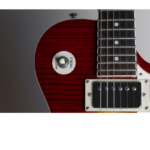Blues guitar scales are the the driver behind many classic rock and blues songs. They are the first scale I play when I pick up my Fender Jazzmaster. The functionality of pentatonic scales opens up the fretboard for crafting melodies that are unique and easy to remember.
In this guide, we’ll explore the art of blues guitar scales, equipping you with the tools to create soulful melodies and mind bending solos. From the expressive bends and slides to the signature licks that define the genre, we’ll break down the essential techniques step by step.
Discover the fascinating history of the blues and how it has shaped the music we know and love today. Learn from legendary blues guitarists such as B.B. King, Buddy Guy and Eric Clapton.
The Importance of Learning Blues Scales
Blues guitar scales are the backbone of the blues. They provide a framework for improvisation, allowing guitarists to express themselves via blues improvisation. Whether you’re playing rhythm or lead, understanding and mastering blues guitar scales is essential for any blues guitarist.
One of the key reasons why learning blues guitar scales is important is the freedom it gives you to create your own unique solos. By familiarizing yourself with the different positions and patterns of blues scales, you’ll be able to navigate the fretboard with ease and effortlessly play soulful melodies and improvisations.
Moreover, blues guitar scales provide a foundation for understanding the underlying harmony and chord progressions in blues music. By knowing which scales to use over different chords, you’ll be able to create melodic phrases that perfectly complement the music and evoke the characteristic bluesy feel.
Learning blues guitar scales also helps develop your ear for music. As you practice and internalize the scales, you’ll start to recognize their distinct sounds and intervals, making it easier for you to play by ear and improvise on the spot.
In summary, mastering blues guitar scales is crucial for any aspiring blues guitarist. It opens up a world of possibilities for improvisation, enhances your understanding of harmonies, and sharpens your musical ear.
Major and Minor Blues Scales Explained
When it comes to blues guitar scales, two of the most important scales to learn are the major and minor blues scales. These scales form the foundation of blues music, and understanding their structure and application is essential for capturing the essence of the genre.
The major blues scale consists of the root, major second, major third, perfect fourth, perfect fifth, and major sixth intervals. For example, in the key of C, the major blues scale would include the notes C, D, E, F, G, and A. This scale has a bright and uplifting sound, often associated with more upbeat blues tunes.
On the other hand, the minor blues scale has a darker and more melancholic sound. It consists of the root, minor third, perfect fourth, diminished fifth, perfect fifth, and minor seventh intervals. Using the key of C again, the minor blues scale would include the notes C, Eb, F, Gb, G, and Bb. This scale is commonly used in slower, more introspective blues songs.
Both the major and minor blues scales can be played in various positions and patterns on the guitar fretboard. It’s essential to practice playing these scales in different keys and positions to develop a solid foundation and improve your overall playing technique.
Techniques for Practicing
Now that you understand the importance of blues guitar scales and have familiarized yourself with the major and minor blues scales, it’s time to jump into some techniques for practicing and mastering these scales.
One of the most effective ways to practice blues guitar scales is to start slow and gradually increase your speed. Begin by playing the scales at a comfortable tempo, focusing on accuracy and clean execution. As you become more comfortable, gradually increase the speed while maintaining control and clarity in your playing.
Another valuable technique is to practice the scales in different musical rhythms and feels . Play along with backing tracks or jam with other musicians to simulate real-life playing situations. This will help you develop your improvisation skills and learn how to apply the scales
Additionally, it’s important to practice the scales in different rhythmic patterns. Experiment with various picking techniques, such as alternate picking and economy picking, to develop speed and dexterity. Practice playing the scales in different time signatures, such as 4/4, 12/8, and 6/8, to expand your rhythmic vocabulary and explore different grooves.
Furthermore, don’t forget to incorporate bends, slides, and vibrato into your scale practice. These techniques are essential for infusing your playing with the expressive and soulful qualities that define the blues genre. Experiment with different types of bends, such as full bends, half bends, and pre-bends, to add depth and emotion to your solos.
Resources for Learning and Mastering Blues Guitar Scales
To truly master the art of blues guitar, it’s important to seek out additional resources and learning opportunities. Here are some recommendations to help you on your blues guitar journey:
- Online Lessons and Tutorials: There are countless online platforms and websites that offer comprehensive blues guitar lessons and tutorials. Websites like TrueFire, Guitar Tricks, and Pickup Music provide a wide range of lessons for players of all skill levels. Many of these guitar players have been interviewed on the Guitar Freaks Podcast
- Transcriptions and Tablature: Studying transcriptions of blues guitar solos and songs can greatly enhance your understanding of blues guitar scales and techniques. Websites like Ultimate Guitar and Songsterr offer a vast collection of transcriptions and tablature for popular blues songs.
- Books and Instructional Materials: Investing in instructional books and materials written by renowned blues guitarists can provide valuable insights and techniques. Some highly recommended tools is called The FretDeck.
- Jamming with Other Musicians: One of the best ways to improve your blues guitar playing is by jamming with other musicians. Join local jam sessions or find online communities where you can connect with other blues enthusiasts and guitarists.
By utilizing these resources and continually seeking new learning opportunities, you’ll be well on your way to mastering the art of blues guitar scales.

Download The FretDeck & Pentatonic Secrets Course!
Download Our Course










